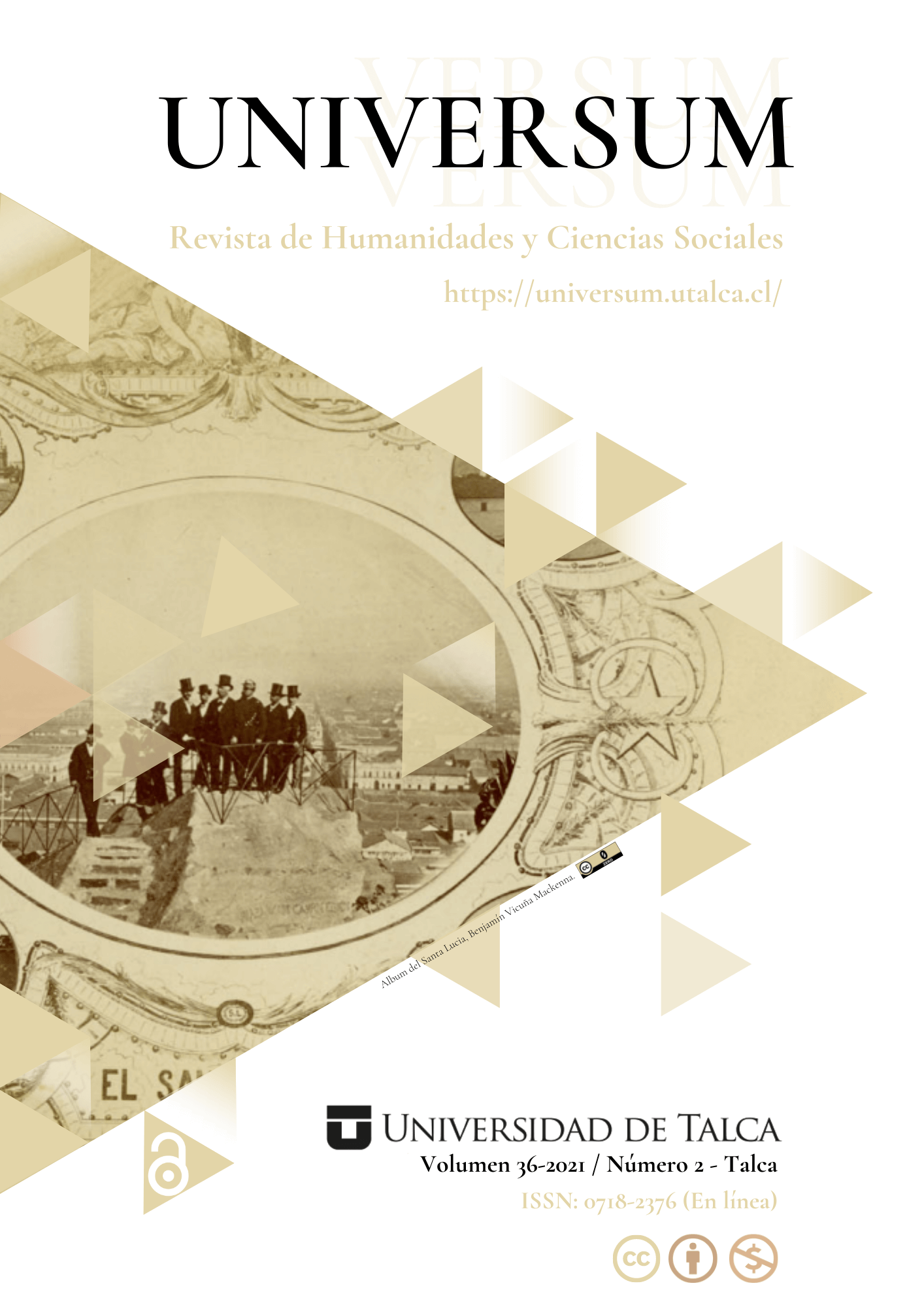Abstract
In this article, a reading will be attempted of some documentary pictures that accompany the testimonies in El despertar de los cuervos. Tejas verdes el origen del exterminio en Chile (2013) by Javier Rebolledo and Ingrid Olderock. La mujer de los perros (2014) by Nancy Guzmán, with the aim of observing how they reinforce the testimonial word and contribute to completing a memory narratology on two places where human rights were systematically violated during the military dictatorship of Augusto Pinochet: Tejas Verdes concentration camp and the house known as ‘Venda Sexy’. Some theoretical texts will be used to support the analysis of the photographic series on the faces of the torturers and the instructors in Tejas Verdes, as well as the four images of the Santiago house, all of them by Claudia Feld, Diamela Eltit, Jaume Peris Blanes, Joan Fontcuberta and Georges Didi-Huberman. This dialogue will allow us to understand how a without artistic intentions photography like documentary photography constitutes a source of informative value and an imprint of constancy of memory to approach a historical moment that could not be closed due to the magnitude of the horror embedded in it.
References
Arendt, Hannah (2003). Eichmann en Jerusalén. Un estudio sobre la banalidad del mal. Lumen.
Didi-Huberman, Georges (2018). La imagen superviviente. Historia del arte y tiempo de los fantasmas según Aby Warburg. Abada.
Eltit, Diamela (2014). Emergencias. Seix Barral.
Feld, Claudia (2015). Imagen y testimonio frente a la desaparición forzada de personas en la Argentina de la transición. Kamchatka, 6, 687-715. https://ojs.uv.es/index.php/kamchatka/article/view/7508/7725.
Fontcuberta, Joan (2015). La cámara de Pandora. La fotografí@ después de la fotografía. Gustavo Gili.
Guzmán Jasmen, Nancy (2014). Ingrid Olderock. La mujer de los perros. Ceibo Ediciones.
Kossoy, Boris (2001). Fotografía e historia. La marca.
Peris Blanes, Jaume (2009). De la prueba documental a la evocación subjetiva. Usos de la fotografía en las publicaciones sobre la represión chilena. Pasajes de pensamiento contemporáneo, 30, 85-96 http://roderic.uv.es/bitstream/handle/10550/28719/054073.pdf?sequence=1&isAllowe
Peris Blanes, Jaume (2017). Testimonio y visualidad: de la visión del ciego a las imágenes del vacío. En Scarabelli, Laura y Cappellini, Serena (Eds.). DONDE NO HABITE EL OLVIDO. Herencia y transmisión del testimonio en Chile (pp. 77-92). Di/Segni http://roderic.uv.es/handle/10550/68010
Pizarro Cortés, Carolina y Santos Herceg, José (2019). El campo testimonial chileno: una mirada de conjunto. Otras Modernidades, 21, 246-267.
Rebolledo, Javier (2015). A la sombra de los cuervos. Los cómplices civiles de la dictadura. Planeta.
Rebolledo, Javier (2013). El despertar de los cuervos. Tejas Verdes el origen del exterminio en Chile. Ceibo Ediciones.
Rebolledo, Javier (2012). La danza de los cuervos. El destino final de los detenidos desaparecidos. Ceibo Ediciones.
S/A. Los horrores de la Venda Sexy. https://www.youtube.com/watch?v=dbpM6QgBoYc.

This work is licensed under a Creative Commons Attribution-NonCommercial 4.0 International License.


